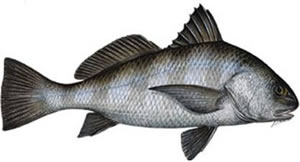 Because of its delicious taste, flounder is one of the top three fish targeted by anglers throughout Texas. However, flounder provide a unique challenge to the Galveston angler, because if you go out too soon or too late, you could miss out on the big flounder run.
Because of its delicious taste, flounder is one of the top three fish targeted by anglers throughout Texas. However, flounder provide a unique challenge to the Galveston angler, because if you go out too soon or too late, you could miss out on the big flounder run.
The best time to catch flounder in Galveston is during their fall migration to the Gulf, typically from October to December. November is considered to be the best month for flounder fishing in Texas. The main reason for the great fishing in November is the annual flounder migration to the Gulf of Mexico reaching its peak and flounder stacking up in such numbers around the passageways to the Gulf that they are easy picking for anglers.
Flounder in Galveston may be caught using rod and reel but most people will prefer gigs. Though there are a few restrictions for flounder, your captain will make sure you’re aware of these and abide by them as well. Book your flounder fishing trip here or call (203)-851-6151 before the best dates are already taken!















Recent Comments